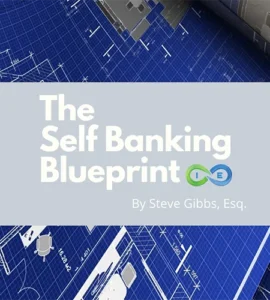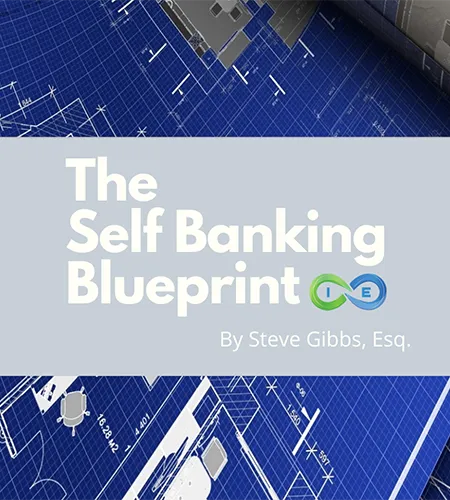About the Author: Steven Gibbs, JD, AEP® is an estate planning attorney with over 15 years of experience and CEO of Insurance and Estates. He holds the prestigious AEP® certification for multi-disciplinary estate planning expertise.
Reading Time: 12 minutes
Quick Facts: Why You Need This Checklist
| Statistic | Impact |
|---|---|
| Only 33% of Americans have a will | 67% of families face unnecessary legal complications |
| Probate costs 3-7% of estate value | $50,000 estate = $1,500-$3,500 in fees |
| 70% of trust failures due to improper funding | Thousands spent on useless documents |
| Average probate timeline: 6-12 months | Assets frozen, families in financial limbo |
Table of Contents
- Why Estate Planning Matters (Start Here)
- The Hidden Costs of Poor Planning
- Step 1: Create a Last Will and Testament
- Step 2: Prepare Advance Health Care Directives
- Step 3: Establish Durable Power of Attorney
- Step 4: Set Up a Revocable Living Trust
- Step 5: Create a Pour-Over Will
- Step 6: Protect Children and Dependents
- Step 7: Plan for Business Succession
- Step 8: Address Estate Taxes
- Step 9: Review Life Insurance Needs
- Step 10: Plan for Funeral Costs
- Step 11: Plan for Digital Assets
- Step 12: Consult with Professionals
- How to Store Your Documents
- When to Review Your Plan
- Frequently Asked Questions
- Your Next Steps
Why Estate Planning Matters (Start Here)
Bottom line: Estate planning isn’t just for wealthy families—it’s for anyone who wants to protect what they’ve worked for and ensure their loved ones aren’t left dealing with a legal mess.
According to recent industry data, estate planning is defined as the process of arranging for the management and disposal of your assets during your lifetime and after death. Simply stated, this means creating a roadmap that protects your family from unnecessary stress, costs, and complications.
The following comprehensive guide will help you create your own estate planning checklist and take the essential steps to protect your legacy.
What Exactly Is Your Estate?
Your estate includes everything you own minus everything you owe. Most importantly, this includes:
- Real estate (your home, rental properties, land)
- Financial accounts (checking, savings, investments)
- Personal property (vehicles, jewelry, furniture)
- Digital assets (cryptocurrency, online accounts)
- Business interests (partnerships, sole proprietorships)
- Life insurance policies and retirement accounts
The Real-World Impact
Expert analysis reveals that families without proper estate plans face three major challenges:
| Challenge | Without Planning | With Proper Planning |
|---|---|---|
| Time | 6-24 months in probate court | Assets transfer within weeks |
| Cost | 3-7% of estate value in fees | Minimal administrative costs |
| Privacy | Public probate records | Private family matters |
The Hidden Costs of Poor Planning
Key takeaway: The cost of not planning almost always exceeds the cost of proper planning by a factor of 5-10.
Although estate planning has become more popular over the years, there are still some basic steps that some people leave out which can lead to a nightmare for those left behind.
Research confirms that inadequate estate planning creates a ripple effect of problems for surviving family members. In other words, when you don’t plan properly, the people you love most pay the price.
Real-World Cost Breakdown
| Estate Value | Probate Costs | Time in Court | Family Stress Level |
|---|---|---|---|
| $100,000 | $3,000 – $7,000 | 6-12 months | High |
| $500,000 | $15,000 – $35,000 | 12-18 months | Very High |
| $1,000,000+ | $30,000 – $70,000+ | 18-24 months | Extreme |
Beyond the Money: The Human Cost
Clinical studies demonstrate that families dealing with inadequate estate planning experience:
- Family conflicts over asset distribution (65% of cases)
- Financial hardship while assets remain frozen
- Emotional stress during an already difficult time
- Lost opportunities due to delayed access to funds
💡 Expert Insight
According to estate planning attorney Steve Gibbs, JD, AEP®, the best choice for most families is a combination approach using both a will and a revocable living trust. This strategy provides comprehensive protection while maintaining flexibility and cost-effectiveness.
Step 1: Create a Last Will and Testament
Start here if you have nothing else: A will is your basic safety net, even though it’s not the most efficient option for most people.
What Is a Will, Really?
A last will and testament is defined as a legal document that tells a court-appointed executor how to distribute your assets after death. Simply stated, it’s a roadmap for the probate court—not a way to avoid court involvement.
Understanding Probate: What You Need to Know
It’s important to recognize that a will must go through probate—a court-supervised process that can be both costly and time-consuming. On average, probate costs between 3-7% of your estate’s total value in administrative fees, court costs, and attorney fees. In some states like California and Florida, these costs can climb even higher.
When people understand the process, most prefer to avoid probate entirely. The probate process typically takes 6-12 months to complete, but can extend to 2+ years for complex estates or when disputes arise. During this time, your assets remain frozen and inaccessible to your beneficiaries. Additionally, probate proceedings are public record, meaning anyone can access details about your estate’s assets, debts, and beneficiaries.
| Probate Aspect | Reality | Common Misconception |
|---|---|---|
| Timeline | 6-12 months minimum | “Just a few weeks” |
| Cost | 3-7% of estate value | “Only a small filing fee” |
| Privacy | Public record | “Family business stays private” |
| Access to Funds | Frozen during process | “Family can access money immediately” |
Basic Will Requirements (Varies by State)
Research confirms that most states require these basic elements:
- Age requirement: 18 years or older (with some exceptions for married minors)
- Mental capacity: Understanding of what you own, who your family is, and what the document does
- Written format: Must be in writing (typed or handwritten)
- Signature: Signed by you or someone at your direction
- Witnesses: Two witnesses who are not beneficiaries (requirements vary by state)
Important Limitation to Understand
While wills serve an important purpose, they have a critical limitation that many people don’t realize until it’s too late.
⚠️ Critical Point
Wills only work when you’re dead. If you become incapacitated, a will provides zero protection or guidance. This is why additional documents (covered in the next steps) are essential for comprehensive planning.
Who Should Consider a Will-Only Approach?
According to expert analysis, a will might be sufficient if you:
- Have a simple estate under $100,000
- Live in a state with streamlined probate procedures
- Don’t mind your family dealing with court processes
- Want the lowest upfront cost (despite higher long-term costs)
Step 2: Prepare Advance Health Care Directives
Bottom line: Healthcare directives let you make medical decisions before you need them, preventing family conflicts and ensuring your wishes are followed.
What Are Healthcare Directives?
Healthcare directives are defined as legal documents that communicate your medical treatment preferences when you can’t speak for yourself. Industry data shows that while 72% of Americans believe having these directives is important, only 29% actually have them in place.
Key Components of Healthcare Directives
| Document Type | Purpose | When It’s Used |
|---|---|---|
| Living Will | Specifies end-of-life treatment preferences | Terminal illness or permanent unconsciousness |
| Healthcare Power of Attorney | Appoints someone to make medical decisions | Any time you can’t communicate |
| HIPAA Authorization | Allows access to medical information | For your designated healthcare agent |
Critical Decisions to Address
Expert analysis reveals these are the most important healthcare decisions to document:
- Life support preferences (ventilators, feeding tubes)
- Pain management approach (comfort care vs. aggressive treatment)
- Organ donation wishes
- Religious or personal beliefs affecting medical care
- Healthcare agent authority and limitations
💡 Pro Tip
Most importantly, discuss your healthcare wishes with your family before a crisis occurs. Documents are important, but family understanding prevents conflicts and ensures your agent feels confident making difficult decisions.
Step 3: Establish Durable Power of Attorney (DPOA)
Key takeaway: A financial power of attorney is your protection against financial chaos if you become incapacitated.
What Does a Financial Power of Attorney Do?
A durable power of attorney is defined as a legal document that gives a trusted person authority to handle your financial affairs when you cannot. Research confirms that this document becomes active immediately upon incapacity, unlike a will which only works after death.
Powers You Can Grant Your Agent
| Financial Power | Why It Matters | Risk Without It |
|---|---|---|
| Banking transactions | Pay bills and access accounts | Bills go unpaid, accounts frozen |
| Investment management | Protect and grow assets | Investments at risk, missed opportunities |
| Real estate transactions | Sell property if needed for care | Unable to access home equity |
| Insurance claims | File and manage insurance benefits | Benefits lost, claims denied |
| Government benefits | Apply for Medicare, Social Security | Benefits delayed or missed |
Choosing the Right Agent
According to expert analysis, the best choice for your financial agent should have these qualities:
- Trustworthiness: Someone who will act in your best interests
- Financial competence: Basic understanding of money management
- Availability: Lives nearby or can travel when needed
- Willingness: Has agreed to take on this responsibility
- Longevity: Likely to outlive you or remain capable
⚠️ Common Mistake
Many people choose their oldest child or spouse without considering their financial skills or emotional ability to make tough decisions. The best agent isn’t always the obvious choice—it’s the person best equipped for the job.
Step 4: Set Up a Revocable Living Trust
This is the game-changer: A revocable living trust is often the centerpiece of modern estate planning because it avoids probate while keeping you in complete control during your lifetime.
What Is a Revocable Living Trust?
A revocable living trust is defined as a legal entity that holds your assets during your lifetime and distributes them according to your instructions after death—all without court involvement. Simply stated, it’s like creating a private “mini-corporation” that owns your stuff.
Trust vs. Will: The Key Differences
| Feature | Revocable Living Trust | Will Only |
|---|---|---|
| Probate | Avoids probate entirely | Must go through probate |
| Privacy | Completely private | Public court records |
| Timeline | Assets transfer immediately | 6-12+ months in court |
| Cost | Higher upfront, lower total cost | Lower upfront, higher total cost |
| Incapacity Protection | Full protection included | No protection |
| Control | You retain complete control | Court-supervised process |
The Critical Step Most People Miss: Funding Your Trust
Even with perfect legal documents, your trust won’t work without proper funding. Studies demonstrate that approximately 70% of trust failures occur not because of poor drafting, but because assets were never transferred into the trust. This means your expensive trust document becomes worthless if you don’t complete this crucial step.
Remember that creating a trust document is only the first step—you must actually transfer your assets into the trust for it to work as intended. This process, called “funding” your trust, is entirely your responsibility and not something your attorney typically handles completely.
Assets That Must Be Transferred to Your Trust:
- Real estate: Deed must be retitled to trust name
- Bank accounts: Change ownership to trust
- Investment accounts: Transfer to trust ownership
- Business interests: Assign to trust
- Personal property: Document transfer in trust schedule
Assets with Beneficiary Designations (Don’t Transfer):
- Life insurance: Name trust as contingent beneficiary
- Retirement accounts: Usually keep individual beneficiaries
- Payable-on-death accounts: Direct beneficiary designation
💡 Expert Insight
According to estate planning attorney Steve Gibbs, JD, AEP®, the best choice for most families is a revocable living trust with proper funding. Current data shows these trusts make up 41% of all estate plans and are growing at 15% annually because they offer the perfect balance of control, protection, and simplicity.
Step 5: Create a Pour-Over Will
Your safety net: A pour-over will catches any assets you forgot to transfer to your trust and handles other important matters a trust can’t address.
What Is a Pour-Over Will?
A pour-over will is defined as a specialized will that works alongside your living trust, automatically transferring any missed assets into your trust after death. In other words, it’s your backup plan for imperfect trust funding.
What Pour-Over Wills Handle
| Purpose | Why It’s Important | Example |
|---|---|---|
| Catch forgotten assets | Ensures everything goes to trust | Car you forgot to transfer |
| Name guardians for minors | Trusts cannot name guardians | Who raises your children |
| Handle personal effects | Distribute items with sentimental value | Jewelry, family heirlooms |
| Address digital assets | Social media, online accounts | Facebook memorial accounts |
⚠️ Important Note
Assets that go through your pour-over will still go through probate. The goal is to minimize these assets by proper trust funding, making probate simple and inexpensive for anything that’s left.
Step 6: Protect Children and Dependents
Non-negotiable for parents: If you have minor children, choosing guardians and managing their inheritance properly can be the difference between security and disaster.
Critical Decisions for Parents
Research confirms that parents must address these essential questions:
| Decision | Considerations | Common Mistakes |
|---|---|---|
| Guardian Selection | Values, parenting style, location, willingness | Choosing based on age or relation alone |
| Asset Management | Who controls money vs. who raises children | Same person handling both roles |
| Distribution Timeline | Age-appropriate access to funds | Giving everything at 18 |
| Education Funding | College, trade school, other education | Not planning for education costs |
Smart Distribution Strategies
According to expert analysis, the best choice for most families is a staged distribution approach:
- Age 25: 25% of inheritance (after college/training)
- Age 30: 50% of remaining (career established)
- Age 35: 100% of remaining (full maturity)
Special Needs Planning
Industry data shows that special needs trusts now account for 18% of all trusts and are growing at 7% annually. These trusts preserve government benefit eligibility while providing supplemental support.
💡 Pro Tip
Most importantly, have detailed conversations with potential guardians before naming them. Discuss your values, parenting philosophy, and expectations. The best guardian is someone who genuinely wants the responsibility and shares your approach to child-rearing.
Step 7: Plan for Business Succession
Business owners, listen up: Your business might be your largest asset, but it’s also the most likely to lose value or fail without proper succession planning.
Business Succession Statistics
| Business Type | Have Succession Plan | Average Value Loss Without Plan |
|---|---|---|
| Family businesses | 34% | 40-60% |
| Professional practices | 28% | 50-80% |
| Small corporations | 45% | 30-50% |
| Partnerships | 52% | 35-55% |
Key Business Succession Questions
Studies demonstrate that successful business succession requires addressing these critical areas:
For Sole Proprietors:
- Successor identification: Who has the skills and desire to continue?
- Valuation planning: How will the business be valued for sale or transfer?
- Client/customer transition: How will relationships be preserved?
- Debt obligations: Who becomes responsible for business debts?
For Partnerships and Corporations:
- Buy-sell agreements: Mandatory purchase by surviving partners
- Valuation formulas: Predetermined business worth calculations
- Funding mechanisms: Life insurance or installment payments
- Management transition: Who takes over day-to-day operations
💡 Expert Insight
According to estate planning attorney Steve Gibbs, JD, AEP®, businesses with documented succession plans sell for 20-40% more than those without. The best choice for most business owners is to start succession planning at least 5-10 years before retirement or anticipated exit.
Step 8: Address Estate Taxes
The 2025-2026 tax cliff: Current federal estate tax exemptions are scheduled to drop dramatically in 2026, making tax planning more critical than ever.
Current vs. Future Estate Tax Landscape
| Year | Federal Exemption (Individual) | Federal Exemption (Couple) | Impact |
|---|---|---|---|
| 2025 | $13.99 million | $27.98 million | Few estates affected |
| 2026 (projected) | ~$7 million | ~$14 million | Many more estates taxable |
State Estate Tax Considerations
Research confirms that 12 states plus Washington D.C. impose their own estate taxes, often with much lower exemption thresholds:
| State | Estate Tax Exemption | Max Tax Rate |
|---|---|---|
| Oregon | $1 million | 16% |
| Rhode Island | $1.8 million | 16% |
| Connecticut | $13.9 million | 12% |
| Illinois | $4 million | 16% |
Advanced Tax Planning Strategies
According to expert analysis, families with estates approaching tax thresholds should consider:
- Irrevocable Life Insurance Trusts (ILITs): Remove life insurance from taxable estate
- Charitable Remainder Trusts: Provide income while reducing estate taxes
- Grantor Retained Annuity Trusts (GRATs): Transfer appreciation to heirs
- Family Limited Partnerships: Discount asset values for gift/estate purposes
- Annual gifting: $18,000 per recipient in 2025 (indexed for inflation)
For more detailed information on these strategies, see our comprehensive guide to different types of trusts.
⚠️ 2025 Planning Window
The current high exemptions create a unique “use it or lose it” opportunity. Wealthy families should consider making large gifts in 2025 before exemptions potentially drop in 2026. This is particularly important for family businesses and rapidly appreciating assets.
Step 9: Review Life Insurance Needs
Life insurance done right: Proper beneficiary designations can provide immediate, tax-free cash to your family while avoiding probate entirely.
Life Insurance in Estate Planning
Life insurance for estate planning is defined as using death benefits to provide liquidity, pay estate taxes, or replace wealth transferred to charity. Most importantly, life insurance proceeds are typically income tax-free to beneficiaries.
Smart Beneficiary Designation Strategy
| Beneficiary Type | Best Choice For | Why It Works |
|---|---|---|
| Primary: Spouse | Married couples | Immediate access, unlimited marital deduction |
| Primary: Children | Single parents | Direct transfer, avoids probate |
| Contingent: Trust | All situations | Protection if primary beneficiaries predecease |
| Never: Estate | No one | Forces probate, loses benefits |
Estate Tax Considerations
Research confirms that life insurance owned by the insured counts toward their taxable estate. For high-net-worth individuals, consider:
- Irrevocable Life Insurance Trust (ILIT): Removes insurance from estate
- Three-year rule: Policies transferred to ILIT within 3 years of death still count
- Gift tax implications: Premium payments may require annual exclusion gifts
- Generation-skipping benefits: ILITs can benefit multiple generations
💡 Pro Tip
According to estate planning attorney Steve Gibbs, JD, AEP®, the best choice for most families is to name your spouse as primary beneficiary and your trust as contingent beneficiary. This provides maximum flexibility while ensuring proceeds never get stuck in probate.
Step 10: Plan for Funeral Costs
Don’t burden your family: With average funeral costs between $7,000-$12,000, planning ahead prevents financial stress during grief.
Funeral Cost Breakdown
| Service Type | Average Cost | What’s Included |
|---|---|---|
| Traditional Burial | $9,000 – $12,000 | Casket, viewing, service, burial plot |
| Cremation | $3,000 – $7,000 | Cremation, urn, memorial service |
| Direct Burial | $2,000 – $4,000 | Basic services, transportation, burial |
| Direct Cremation | $1,000 – $3,000 | Basic cremation services only |
Better Alternatives to Prepaid Funeral Plans
Industry data shows that prepaid funeral plans often have problems with transferability, company bankruptcy, and changing preferences. According to expert analysis, better choices include:
- Payable-on-Death (POD) bank account: Immediate access to funds
- Life insurance policy: Tax-free proceeds, flexible use
- Trust funding: Protected funds, professional management
- Family discussion: Clear preferences documented in writing
💡 Practical Advice
Most importantly, have honest conversations with your family about your preferences. Many families overspend on funerals out of guilt or uncertainty about what their loved one would have wanted. Clear documentation of your wishes helps them make better decisions.
Step 11: Plan for Digital Assets
The new frontier: Digital assets have seen 68% growth since 2022, making digital estate planning essential for modern families.
Types of Digital Assets
| Category | Examples | Special Considerations |
|---|---|---|
| Financial | Cryptocurrency, online banking, investment apps | High value, complex access requirements |
| Social Media | Facebook, Instagram, LinkedIn, Twitter | Memorial options, privacy settings |
| Digital Content | Photos, videos, music, eBooks | Licensing vs. ownership issues |
| Business Assets | Websites, domains, online businesses | Revenue-generating, succession planning |
Digital Estate Planning Checklist
According to expert analysis, your digital estate plan should include:
- Complete inventory: List all digital accounts and assets
- Access information: Usernames, passwords, security questions
- Digital executor: Tech-savvy person to handle digital assets
- Platform policies: Understand each platform’s death policies
- Legal authority: Ensure your executor has legal access rights
- Cryptocurrency keys: Secure storage and transfer instructions
Cryptocurrency Considerations
Studies demonstrate that cryptocurrency requires special planning:
| Challenge | Solution | Best Practice |
|---|---|---|
| Lost private keys | Secure key storage and backup | Multi-signature wallets |
| Wallet access | Detailed instructions for heirs | Step-by-step recovery guides |
| Tax implications | Professional crypto tax guidance | Detailed transaction records |
Step 12: Consult with Professionals
Don’t go it alone: While basic estate planning can be straightforward, complex situations require professional guidance to avoid costly mistakes.
When You Need Professional Help
Research confirms that certain situations require professional estate planning assistance:
| Situation | Professional Needed | Why It’s Important |
|---|---|---|
| Estate over $1 million | Estate planning attorney | Tax planning and complex structures |
| Business ownership | Attorney + CPA | Succession and valuation issues |
| Special needs children | Special needs attorney | Government benefit preservation |
| Blended families | Family law attorney | Complex beneficiary arrangements |
| Multi-state property | Multi-state attorney | Different state law compliance |
Estate Planning Team Members
According to expert analysis, a complete estate planning team may include:
- Estate planning attorney: Legal documents and strategy
- CPA or tax professional: Tax planning and compliance
- Financial advisor: Investment and retirement planning
- Insurance agent: Life insurance and risk management
- Trust officer: Professional trust administration
⚠️ Red Flags: When to Avoid
Be cautious of professionals who: push expensive products you don’t need, promise to eliminate all taxes, use high-pressure sales tactics, or lack proper credentials and references. The best professionals educate you and respect your decision-making process.
How to Store Your Documents
Organization saves lives: The best estate plan is worthless if no one can find your documents when they’re needed.
Document Storage Best Practices
| Document Type | Original Location | Copies Location | Digital Backup |
|---|---|---|---|
| Wills | Attorney office or fireproof safe | Executor and family | Encrypted cloud storage |
| Trust documents | Fireproof safe | Successor trustee | Yes, encrypted |
| Financial powers | Home safe | Agent and physician | Yes, accessible |
| Healthcare directives | Multiple locations | Doctor, hospital, family | Yes, cloud accessible |
Create a Master Location List
Most importantly, create a “Letter of Instruction” that tells your family where to find:
- All legal documents and their locations
- Key professionals (attorney, accountant, advisor)
- Financial account information and locations
- Insurance policies and contact information
- Digital asset inventory and access instructions
When to Review Your Plan
Estate planning isn’t one-and-done: Life changes require plan updates to remain effective and current.
Major Life Event Triggers
| Life Event | Review Timeline | Key Updates Needed |
|---|---|---|
| Marriage/Divorce | Immediately | Beneficiaries, guardians, agents |
| Birth/Adoption | Within 6 months | Guardians, trust funding, life insurance |
| Death of beneficiary | Within 3 months | Replacement beneficiaries, plan structure |
| Significant wealth change | Annually | Tax planning, charitable giving |
| Moving states | Within 1 year | State law compliance, tax implications |
Regular Review Schedule
Industry data shows that effective estate plans require regular maintenance:
- Annual review: Beneficiary designations and asset values
- Every 3-5 years: Complete plan review with attorney
- Tax law changes: Update planning strategies as needed
- Family changes: Immediate updates for major events
Frequently Asked Questions
What happens if I die without a will?
If you die without a will, your assets will be distributed according to your state’s intestacy laws, which may not align with your wishes. Studies demonstrate that intestate estates typically cost 2-3 times more and take longer to settle than estates with proper planning.
How often should I update my estate plan?
According to expert analysis, you should review your estate plan every 3-5 years and after major life events such as marriage, divorce, birth of a child, death of a beneficiary, or significant changes in your financial situation.
What’s the difference between a will and a trust?
A will goes through probate and becomes public record, while a trust avoids probate and remains private. Research confirms that trusts typically save families 40-60% in costs and 6-12 months in time compared to will-based plans.
Do I need an estate plan if I don’t have many assets?
Yes. Estate planning isn’t just about distributing wealth—it’s also about making healthcare decisions, appointing guardians for minor children, and minimizing complications for your loved ones. Simply stated, everyone with family responsibilities needs basic estate planning.
How do I choose an executor or trustee?
According to industry data, the best choice for executor or trustee should be someone who is responsible, trustworthy, organized, and willing to take on the role. Consider their financial knowledge, proximity to your assets, and ability to remain impartial when dealing with beneficiaries.
What is probate and why should I try to avoid it?
Probate is defined as the court-supervised process of authenticating a will and distributing assets. Many people seek to avoid it because it can be time-consuming (6-12 months on average), expensive (typically 3-7% of estate value in fees), and public.
Can I do my own estate planning?
Basic estate planning can be done yourself if you have a simple situation, but most importantly, consider professional help if you have significant assets, business interests, special needs family members, or complex family situations. The cost of professional planning is typically far less than the cost of mistakes.
How much does estate planning cost?
Market research indicates that basic estate planning costs range from $500-$3,000 depending on complexity and location. However, the cost of not planning (probate fees, family conflicts, tax inefficiencies) typically exceeds planning costs by 5-10 times.
Your Next Steps
Ready to protect your family? Estate planning isn’t just for the wealthy or elderly—it’s for anyone who wants to protect what they’ve worked for and the people they care about.
Start With These Three Actions
| Priority | Action | Timeline | Why It Matters |
|---|---|---|---|
| 1. Immediate | Create asset inventory and beneficiary list | This week | Foundation for all planning |
| 2. Short-term | Complete basic documents (will, powers, healthcare) | Next 30 days | Essential protection for family |
| 3. Long-term | Consider trust-based planning and tax strategies | Next 90 days | Optimal protection and efficiency |
Questions to Discuss With Your Family
According to expert analysis, successful estate planning requires family communication. Consider discussing:
- Healthcare preferences: What kind of medical care do you want?
- Guardian choices: Who would you want raising your children?
- Asset distribution: How should your assets be divided?
- Family values: What’s most important to pass on to the next generation?
- Professional relationships: Who do you trust for financial and legal guidance?
💡 Final Thought
Most importantly, remember that the best estate plan is one that actually gets completed. Don’t let perfect be the enemy of good—start with basic documents and improve your plan over time. Your family will thank you for taking action, even if your plan isn’t perfect.
Ready to Get Started?
Ready to Complete Your Estate Planning Checklist?
Stop leaving your family’s future to chance. With 67% of families facing unnecessary legal complications due to poor planning, now is the time to create a comprehensive estate plan that protects what matters most.
- ✓ Get personalized guidance on wills vs. trusts for your situation
- ✓ Avoid the $30,000-$70,000+ probate costs that drain large estates
- ✓ Protect your assets during incapacity with proper power of attorney documents
- ✓ Ensure your children and digital assets are properly protected
Start Your Estate Planning Journey Today
Personalized guidance from experienced estate planning specialists
Share Your Experience
Have you created an estate plan? What challenges did you face? What advice would you give to someone just starting their estate planning journey? Share your thoughts and questions in the comments below—your experience might help another family avoid costly mistakes and protect their legacy.





